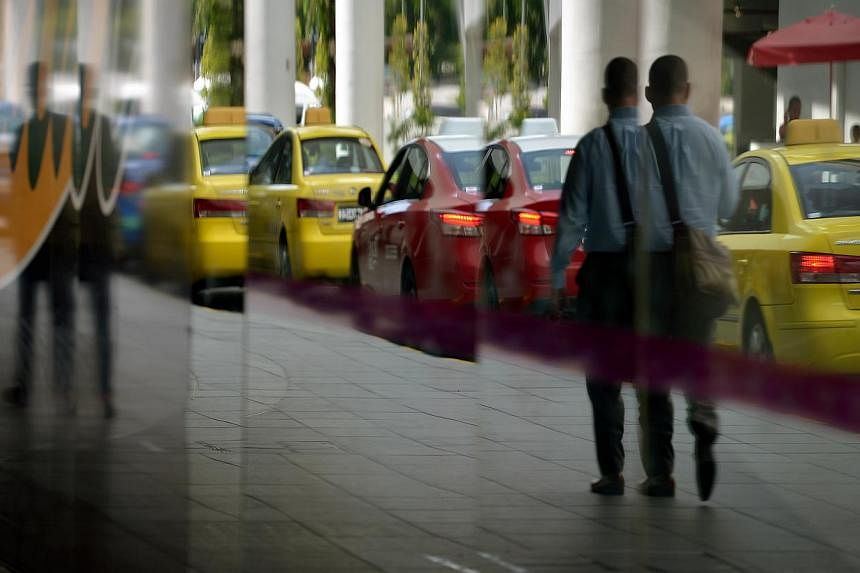Taxi operators will have to abide by new fare rules from the second half of the year, in an effort to steamline fares and ease confusion for commuters.
Varying degrees of standardisation will be imposed on operators for surcharges, meter fares and booking fees.
But the Land Transport Authority (LTA) stopped short of streamlining the complex array of flag-down fares, a major bugbear among commuters. Taxi companies will be allowed to continue charging different flag-down fares for different cab models.
The recommendations are the result of a year-long consultation that the LTA and Public Transport Council (PTC) held with commuters and taxi companies and drivers, following calls to make the taxi fare structure less complicated.
"LTA and PTC will adopt a balanced approach... As mandating the harmonisation of flag-down fares may lead to higher flag-down fares for commuters, we will leave them as they are for now," they said.
The recommendations can be implemented only after changes to the Public Transport Council Act are made.
Once changes are approved, all 28,000 cabs on the road will have to charge the same peak-period, location, city, and midnight surcharge rates.
Currently, all companies levy a surcharge of 25 per cent of the metered fare during the peak period and 50 per cent during the late-night period. This will remain, but if there is a lack of consensus among cab companies in the future, the PTC will arbitrate in the matter to set a common standard.

Similarly, all taxis - regular or premium - will charge the same location-based surcharge. However, operators may opt out of imposing this surcharge if they wish. For example, currently only SMRT and Prime have a $3 surcharge for Marina Bay Sands at some times of the day, but the other cab companies have chosen not to impose this.
Standardisation for call booking rates and metered rates will be less stringent. Cab companies can choose how much they want to charge for these but they must maintain one set of rates for all their regular taxis and another for their premium taxis.
They must also follow the set time and distance parameters for these surcharges. For example, all operators must charge their unit fares every 400m after the first kilometre to the 10th kilometre, and every 350m thereafter.
Currently, all standard cabs have a metered rate of 22 cents. However, there are variations for premium models. For example, SMRT now charges a metered rate of 30 cents for its Ssangyong Rodius but 33 cents for the Chrysler 300C model.
In terms of booking fees, Prime has three different charges of $3.50, $5 and $6 during peak hours for its regular taxis. With the new rules, it will have to settle on one rate.
If cab companies want to introduce any new fare components, they will have to apply to the Public Transport Council for approval.
Commuter Rena Tan said that although she has to "continue paying different flag-down fares, at least some of the surcharges are now the same".
"But as there's a shortage of cabs usually, passengers do not have much choice and will take the cab even if they know it will cost more," added the 34-year-old business development manager.
Additional reporting by Rachel Tan


